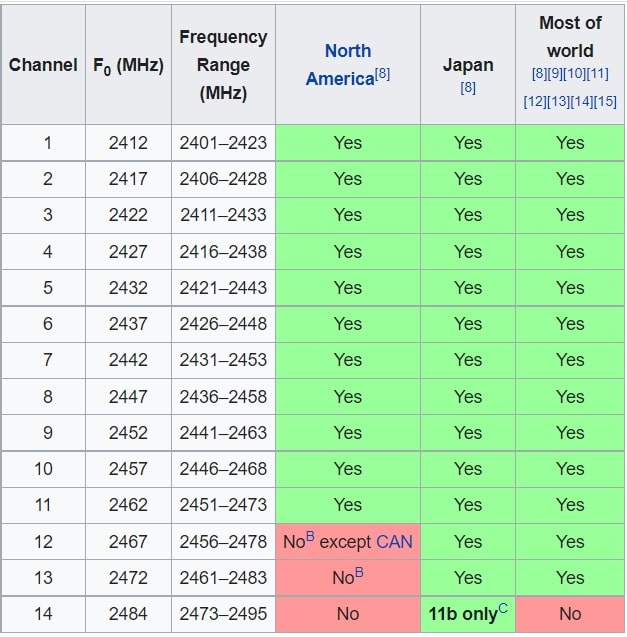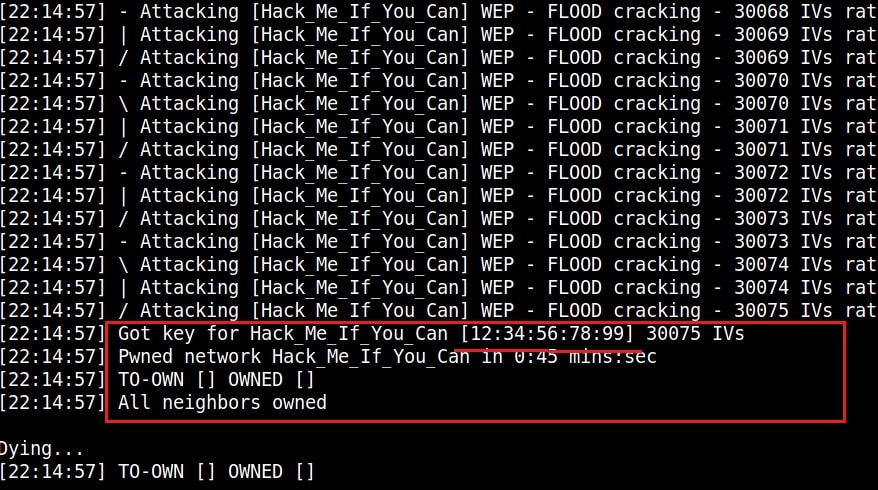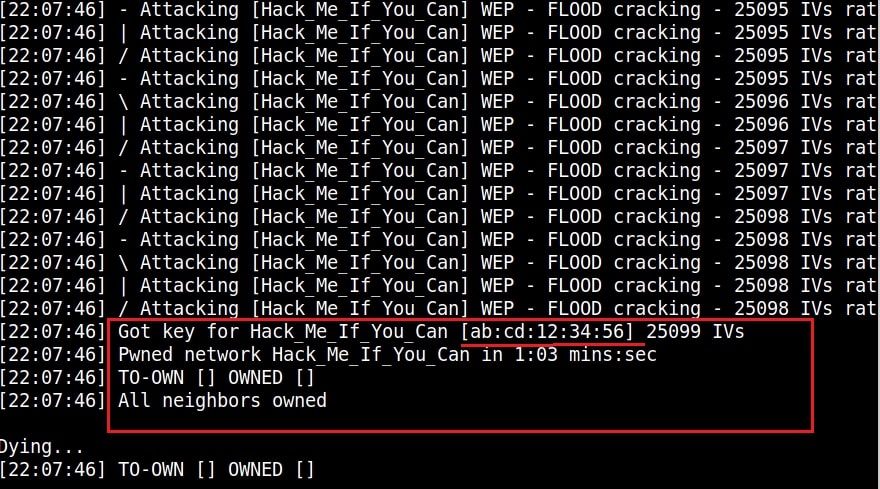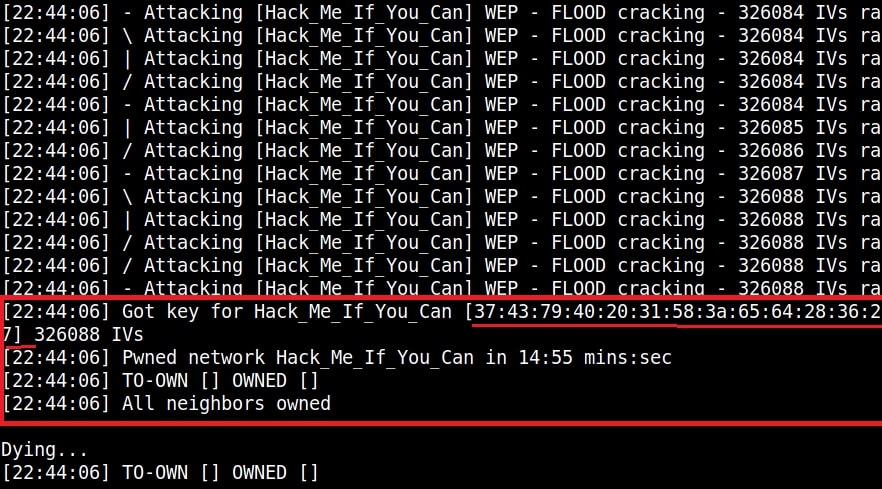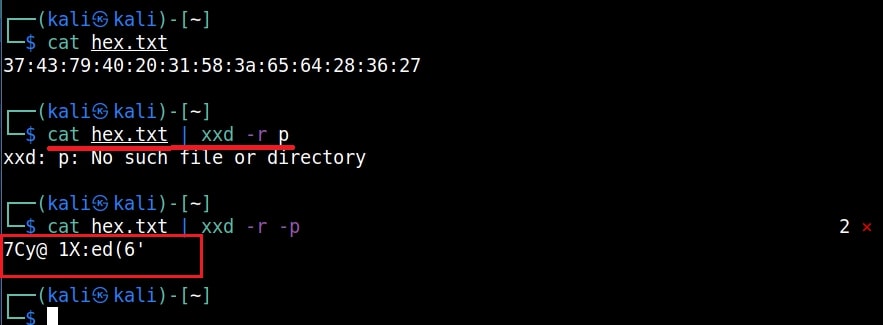Hello aspiring ethical hackers. In this blogpost, we bring you the complete guide to WiFi hacking. WiFi hacking or wireless hacking is compromising of the wireless networks. Before going deep into hacking wireless networks, let us give you a brief history of Wi–Fi.
History of Wi-Fi
Wi-Fi is the name given to a family of wireless network protocols, based on the IEEE 802.11 family of standards. These are commonly used for local area networking of devices and also for Internet access. Simply put, this allows nearby digital devices to exchange data using radio waves. No need to mention what these devices are.
The beginning of Wi – Fi happened in the form of ALOHAnet which successfully connected the Great Hawaiian Islands with a UHF wireless packet network in 1971. ALOHA net and the ALOHA protocol in fact were precursors of Ethernet and 802.11 protocols.
After another 14 years, in 1985 a ruling by the U.S. Federal Communications Commission released the band for unlicensed use. These frequency bands are the 2.4 gigahertz (120 mm) UHF and 5 gigahertz (60 mm) SHF radio bands. These frequency bands are the same ones used by equipment such as microwave ovens, wireless devices etc.
The first version of the 802.11 protocol was released in year 1997 and provided speed up to 2 Mbit/s. The 802.1a came as an improvement over the original standard. It operates in 5 GHz band, uses a 52-subcarrier orthogonal frequency-division multiplexing (OFDM) and has speed of mid 20 Mbit/s. This was replaced with 802.11b protocol in 1999 and this had 11 Mbit/s speed. It is this protocol that would eventually make Wi -Fi popular.
In the same year, a non-profit association named Wi-Fi Alliance was formed which restricted the use of the term Wi-Fi Certified to products that successfully complete interoperability certification testing. By 2017, the Wi-Fi Alliance had more than 800 companies from around the world and shipped over 3.05 billion Wi-Fi enabled devices by year 2019.
The first devices to use Wi-Fi connectivity were made by Apple which adopted this option in their laptops. 802.11g was adopted to the 802.11 specification in year 2003. It operated in the 2.4 GHz microwave band and provided speed upto 11 Mbit/s. Another standard was adopted in year 2008, named 802.11n which operated in both 2.4 and 5 GHz and had a linkrates 72 to 600 Mbit/s. This standard was also known as WI-Fi 4.
Similarly, 802.11ac, 802.11ax and standards were also adopted later which further improved speed and performance of Wi -Fi. Now, let us learn about some terms that frequently occur regarding wireless.
Basic terminology Of Wi-Fi hacking
Wireless Access Point (WAP): A Wireless Access Point (WAP), commonly known as Access Point (AP) is a networking hardware device that allows other Wi-Fi devices to connect to it. This Access Point allows wireless devices to connect to wired devices and generally provides internet. Mostly the Access Point is a Wi -Fi Router.
Wireless Client: A Wireless Device that connects to the Wireless Access Point to access internet is known as a Wireless Client. Ex : all the devices that connect to a Wi- Fi Router.
Wireless Local Area Network (WLAN) : The Computer Network comprising of the Wireless Access Point and two or more Wireless Clients is known as Wireless Local Area Network. This is a LAN but without wires.
Service Set Identifier (SSID) : A Service Set Identifier (SSID) is the name of the Wireless network. Normally, it is broadcast in the clear by Wireless Access Points in beacon packets to announce the presence of a Wi -Fi network. The SSIDs can be up to 32 octets (32 bytes) long. For example, SSID in our first wireless hacking article is “Hack_Me_If_You_Can”.
Extended Service Set Identifier (ESSID): An Extended Service Set Identifier (ESSID) is a wireless network created by multiple access points. This is useful in providing wireless coverage in a large building or area in which a single Access Point (AP) is not enough. However, this appears as a single seamless network to users. The name is same as SSID.
Basic Service Set Identifier (BSSSID): Previously our readers learnt that every hardware device in computing is hardcoded with a MAC Address. A BSSID is the MAC address of the Access Point.
Channels: Readers have learnt that Wi- Fi operates in the frequency range of 2.5GHz and 5GHz. These frequency bands are divided into smaller frequency bands which are known as channels. Usually, these channels are of width 20MHz. The 2.5 GHz range is divided into 14 channels each spaced 5Mhz apart to avoid interference and disturbance. Similarly, The 5GHz band is divided into 24 channels.
In our First wireless hacking attack, the channel of our Access Point is 1.
Beacons: Beacons are one of the management frames in IEEE 802.11 based WLANs. A Beacon Frame contains all the information about the network and is transmitted periodically to announce the presence of a wireless LAN and to synchronize the members of the WLAN.
Signal Strength : Wi-Fi signal strength refers to the strength of the Wi-Fi network connection. The correct way to express Wi-Fi signal strength is mW but it is also very complex. So for simplicity, the signal strength is expressed in as dBm, which stands for decibels relative to a milliwatt.
dBm works in negatives. For example, change the values here. -34 is a higher signal than -64 or -94 because -80 is a much lower number.
Data: Data needs no explanation.
Encryption: Encryption refers to the Wi fi Encryption protocol used for security. There are three types of wireless encryption protocols at present. Wired Equivalent Privacy (WEP), Wi-Fi Protected Access (WPA), and Wi-Fi Protected Access Version 2 (WPA2). More about them soon.
Authentication: The authentication method used by wireless clients to authenticate with wireless access point. More about it soon too.
Cipher : Ciphers are standard security. ciphers are part of Wi-FI security to enhance the security of wireless networks. Example WPA can use either CCMP or TKIP ciphers.
Wardriving: Wardriving is the act of searching for wireless networks while moving on a vehicle using a Wi – Fi enabled device like laptop or a smart phone. The term War driving originated from the term wardialing, the method which was popularized by a character played by Matthew Broderick in the film WarGames. There are other variants of Wardriving like Warbiking, Warcycling and Warwalking which are similar to wardriving but use other modes of transportation.
Wi -Fi Security
Wired Equivalent Privacy: Wired Equivalent Privacy (WEP) is the first security algorithm for IEEE 802.11 wireless networks that was introduced as part of the original 802.11 standard ratified in 1997. As its name implies, the intention was to provide data confidentiality equivalent to that of a traditional wired network. WEP was the only encryption protocol available to 802.11a and 802.11b devices as these were built before the WPA standard was released. WEP was ratified as a Wi-Fi security standard in 1999. The first versions of WEP used only 64-bit encryption as U.S.A restricted export of cryptographic technology.
WEP uses the Rivest Cipher 4 (RC4) for confidentiality and the Cyclic Redundancy Check (CRC) 32 checksum for integrity. RC4 is a stream cipher known for simplicity and speed.
Standard 64-bit WEP uses a 40 bit key which is concatenated with a 24-bit initialization vector (IV, remember something) to form the RC4 key. A 64-bit WEP key usually has a string of 10 hexadecimal (base 16) characters (0–9 and A–F). See Image below.
Each character in the key represents 4 bits. 10 digits of these 4 bits each give 40 bits. When we add 24-bit Initialization Vector to this 40 bits, complete 64-bit WEP key is produced. Some devices also allow the user to enter the key as 5 ASCII characters (0–9, a–z, A–Z), each of which is turned into 8 bits using the character’s byte value in ASCII. However, this restricts each byte to be a printable ASCII character, which is only a small fraction of possible byte values, greatly reducing the possible keys. After USA lifted restrictions on export of cryptographic technology, 128bit WEP key came into existence.
Each digit is of 4 bits. 26 digits of these 4 bits each give 104 bits. When we add a 24-bit IV to this 104 bits produced the complete 128-bit WEP key. Most devices allowed the user to enter 13 ASCII characters as WEP key.
Although some vendors made 152-bit and 256-bit WEP systems also available, 128 bit WEP was widely used.
Authentication System of WEP
WEP uses two methods of authentication.
1. Open System authentication
2. Shared Key authentication.
1. Open System Authentication
In Open System authentication, the WLAN client that wants to connect to a Access Point doesn’t need any credentials during authentication. Simply put, no authentication occurs. Subsequently, WEP keys are used for encrypting data frames. At this point, the client needs to have correct WEP key.
2. Shared Key Authentication
In Shared key authentication, authentication takes place in a four-step challenge-response handshake :
Step 1: The client sends an authentication request to the Access Point.
Step 2: The Access Point replies with a clear-text challenge.
Step 3: The client encrypts the challenge-text using the configured WEP key and sends it back in another authentication request.
Step 4: The Access Point decrypts the response. If this matches the challenge text, the Access Point sends back a positive reply.
After the authentication and association is successful, the pre-shared WEP key is also used for encrypting the data frames using RC4. Although Shared Key Authentication appears secure than Open System Authentication, it is actually vice versa.
Weak Security Of WEP
WEP uses RC4 which is a stream cipher. Hence the same traffic key cannot be used twice. It is due to this purpose that WEP uses Initialization Vectors (IVs). But the problem is WEP uses 24 bit IVs for both 64 bit and 128 bit key. This 24bit IV is not long enough to ensure non-repetition on a busy network. For a 24-bit IV, there is a 50% probability the same IV will repeat after 5,000 packet -s. So WEP key in a busy network can be easily cracked since it has lot of traffic.
Attackers can even create fake connections ( to generate more traffic and then crack the WEP key. As we have seen in this article, the more IVs we captured the faster it is to crack WEP and it usually takes only minutes to crack the WEP key with besside-ng tool. That’s all in our Part 1 of Understanding wireless security. In Part 2 of this article, readers will learn about WPA / WPA2.
Hello aspiring ethical hackers. Welcome to the second part of understanding Wireless security. In Part 1, readers have learnt about the history of WiFi, terminology used in WiFi and WEP security and its weakness. So, let’s continue from there. Responding to the serious weaknesses in WEP encryption security, the Wi-Fi Alliance introduced Wi-Fi Protected Access (WPA) to secure wireless networks. However, the Wi-Fi Alliance intended WPA as an interim measure to take the place of WEP before they bring in Wi-Fi Protected Access 2 (WPA 2).
Wi – Fi Protected Access (WPA)
Also known as Temporal Key Integrity Protocol (TKIP) standard, WPA implements the TKIP encryption method and was introduced in 2003. TKIP introduced three new methods to overcome weaknesses in Wired Equivalent Privacy (WEP) standard.
1. TKIP implements a key mixing function that combines the secret root key with the initialization vector before passing it to the RC4 cipher initialization. WEP on the other hand merely concatenated the initialization vectors to the root key and passed this value to the RC4 cipher.
2. A sequence counter is implemented to protect against replay attacks. Hence, packets received out of order will be rejected by the Access point.
3.TKIP implements a 64-bit Message Integrity Check (MIC) replacing Cyclic Redundancy Check (CRC) used in WEP. This re-initializes the sequence number each time when a new key (Temporal Key) is used.
Wi – Fi Protected Access (WPA) 2
WPA 2 was introduced in 2004 to replace WPA. It implemented the mandatory elements of IEEE 802.11i. 802.11i makes use of the Advanced Encryption Standard (AES) block cipher instead of RC4 stream cipher used by both WEP and WPA. It also uses Counter Mode Cipher Block Chaining Message Authentication Code Protocol (CCMP) encryption protocol. It provides the following security services.
1. Data Confidentiality: It ensures only authorized parties can access the information
2. Authentication: provides proof of genuineness of the user
3. Access control in conjunction with layer management.
Wi – Fi Protected Access 3 (WPA 3)
The Wi-Fi Alliance announced WPA3 as a replacement to WPA2 in 2018. The new standard uses an equivalent 192-bit cryptographic strength in WPA3-Enterprise mode (AES-256 in GCM mode with SHA-384 as HMAC) and still mandates the use of CCMP-128 (AES-128 in CCM mode) as the minimum encryption algorithm in WPA3-Personal mode.
The WPA3 standard also replaces the pre-shared key (PSK) exchange with Simultaneous authentication of Equals (SAE) exchange, a method originally introduced with IEEE 802.11s. This results in a more secure initial key exchange in personal mode and forward secrecy.
WPA – Versions
There are two versions of WPA. They are,
- A. WPA- Personal
- B. WPA – Enterprise
WPA – Personal
Wi-Fi Protected Access (WPA) – Personal is designed for home and small office networks. This version uses Pre- Shared Key (PSK) and hence it is also referred as WPA-PSK (pre-shared key) mode. The network traffic is encrypted using a 128-bit encryption key derived from a 256-bit shared key. WPA-Personal mode is available on all three WPA versions.
WPA – Enterprise
As its name implies, this is designed for enterprise networks and requires a RADIUS authentication server. This requires a more complicated setup but provides additional security like protection against dictionary attacks on short passwords. Various kinds of the Extensible Authentication Protocol (EAP) are used for authentication. WPA-Enterprise mode is available on all three WPA versions.
Weakness Of WPA/WPA2
1. Pre-shared key WPA and WPA2 remain vulnerable to password cracking attacks if users rely on a weak password or passphrase.
2. WPA passphrase hashes are seeded from the SSID name and its length; rainbow tables exist for the top 1,000 network SSIDs and a multitude of common passwords, requiring only a quick lookup to speed up cracking WPA-PSK
Brute forcing of simple passwords can be attempted using the Aircrack Suite starting from the four-way authentication handshake exchanged during association or periodic re-authentication. In this article, readers have seen how WPA password was cracked. One important feature of cracking WPA /WPA2 is that we don’t need a lot of traffic to crack it. We just need one client connected to the Wi-Fi Access point. Then we de authenticate it from the Wi-Fi Access point. The client automatically tries to connect to the Wi-Fi access point again.
It is at this stage, we try to capture the WPA handshake. If you have noticed, while using aircrack, to crack the password, we supplied a dictionary or wordlist. While cracking WEP we didn’t.
So what is a weak password? Any password that is part of a dictionary or wordlist can be called a weak password in WPA. Otherwise, WPA /WPA2 is considered secure. WPA3 replaces cryptographic protocols susceptible to off-line analysis with protocols that require interaction with the infrastructure for each guessed password, supposedly placing temporal limits on the number of guesses. However, design flaws in WPA3 enable attackers to plausibly launch brute-force attacks.
Wi-Fi Protected Setup (WPS)
In year 2007, the Wi-Fi Alliance introduced Wi-Fi Protected Setup (WPS). The main feature of this protocol is to allow home users who have little knowledge about wireless security to set up Wi-Fi Protected Access (For some users, accessing the router dashboard and setting passwords can be too complex). It also makes it easy to add new devices to an existing Wireless network without entering long passphrases. WPS also allows the owner of Wi-Fi privileges to block other users from using their household Wi-Fi. There are two common methods to use WPS.
- PIN Method.
- Push Button Method.
PIN Method
Every Wireless Router with WPS enabled has a PIN on the Wi-Fi Router (which is usually printed on a sticker). This PIN must then be entered into any new device that wants to connect to this Wireless network. No need of memorizing any password.
Push Button Method
In this method, the user has to PUSH a WPS button on both the Access point and the new wireless client device. On most devices, this discovery mode turns itself off as soon as a connection is established or after a delay (typically 2 minutes or less), whichever comes first, thereby minimizing its vulnerability.
Although WPS was introduced to simplify Wi-Fi Connection issues, it suffers from a major vulnerability. Any remote attacker can recover the WPS pin in a few hours by using brute force attack. Once he does this, he can easily recover WPA/WPA2 key also. Nowadays, all recent models of Wireless Routers have WPS enabled by default. It is wise to turn off WPS PIN feature although this is not possible on many routers.
WPS is widely understood to have added insecurity to otherwise secure WPA/WPA2. WPS pin is a 8 digit PIN that is required by clients to connect to the Wireless Router. The Wireless Router instead of checking the entire 8 digit PIN at once, checks the first four digits initially and then checks the last four digits. This makes brute forcing WPS PINs very easy.
This is because there are only 11,000 possible 4 digit pins and once the brute force software gets the first 4 digit pin right, the attacker can move on to cracking the latter 4 digit pin.
Tools Bully and Reaver are first to come to mind when we want to crack WPS pin. However, in our latest tests, both the tools are presenting some problems. You can read our previous articles on Bully and Wifite.
That was a complete guide to understanding wireless security. Hope our readers now have a better understanding of Wireless security. You can read Part 1 of Understanding Wireless security here. Happy hacking.
Follow Us
